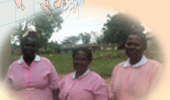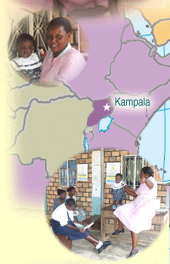
Creating Adolescent-Friendly Services
A pilot project in Jinja district attracted youth to primary-level health care facilities through the creation of a youth-friendly environment including structured educational and recreational activities designed to improve adolescents’ reproductive health knowledge and care-seeking behavior. The project, which began under PRIME I in 1998 and finished under PRIME II in 2000, was designed in response to a finding that Ugandan adolescents were not making use of public health care facilities even though they suffer myriad health problems and are at high risk for HIV/AIDS/STIs. Adolescent views and preferences helped guide the development of a training curriculum that emphasized provider attitude change, appropriate counseling skills, and the information necessary to offer adolescents unrestricted FP/RH services.
Key Results:In the pilot facilities, the proportion of adolescents among clients seeking outpatient services more than doubled, from 24% before the intervention (2,370/9,785) to 49% after (5,419/11,038). This was significantly higher than the proportion at comparison facilities, where only 23% of outpatient clients were adolescents at the time of the final evaluation (788/3,495). In addition, a sampling of sexually active adolescents in the intervention area showed significantly higher rates of FP method use than among adolescents in comparison areas (71% vs. 50%, n=59, n=60). The number of adolescents receiving laboratory services and STI management increased 74% and 84%, respectively, at the pilot centers after the intervention, and qualitative data indicated that many adolescents at the pilot sites were seeking help for STIs at an earlier, manageable stage. Qualitative data from interviews also suggested that after the intervention some female adolescents chose abstinence as a way of taking charge of their sexuality. The combination of high FP use and more young women acquiring the self-esteem to say “no” may relate to a documented decrease in adolescents seeking maternity services at the pilot sites post-intervention. The pilot was scaled up in 11 districts through the bilateral DISH II project.
For a more in-depth look at the Jinja ARH program, read the PRIME II
Dispatch, “To Reach the Youth.”
|











